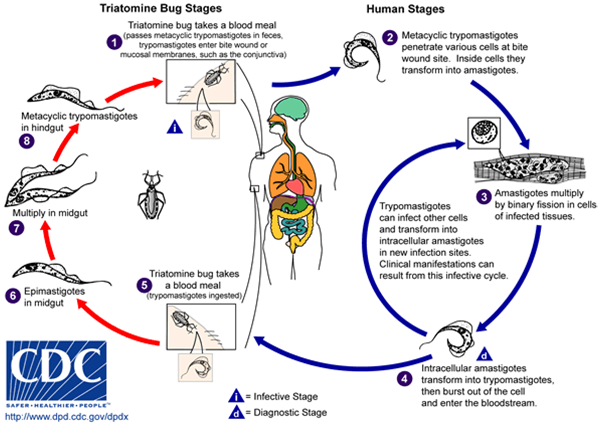Trypanosoma cruzi Life Cycle

An infected triatomine insect vector takes a blood meal from a mammalian host and releases trypomastigotes in its feces. Trypomastigotes enter the host through the wound or through mucosal membranes. Inside the host, trypomastigotes invade cells , where they differentiate into intracellular amastigotes. The amastigotes multiply, differentiate into trypomastigotes, and are released into the circulation as bloodstream trypomastigotes. Trypomastigotes infect cells and transform into intracellular amastigotes. The clinical manifestations of acute infection can result from this infective cycle. Replication resumes only when the parasites enter another cell or are ingested by another vector. The triatomine bug becomes infected by feeding on human or animal blood containing circulating parasites. The ingested trypomastigotes transform into epimastigotes. The parasites multiply in the midgut and differentiate into infective metacyclic trypomastigotes in the hindgut. Trypanosoma cruzi can also be transmitted through blood transfusions, organ transplantation, transplacentally, and in laboratory accidents.


